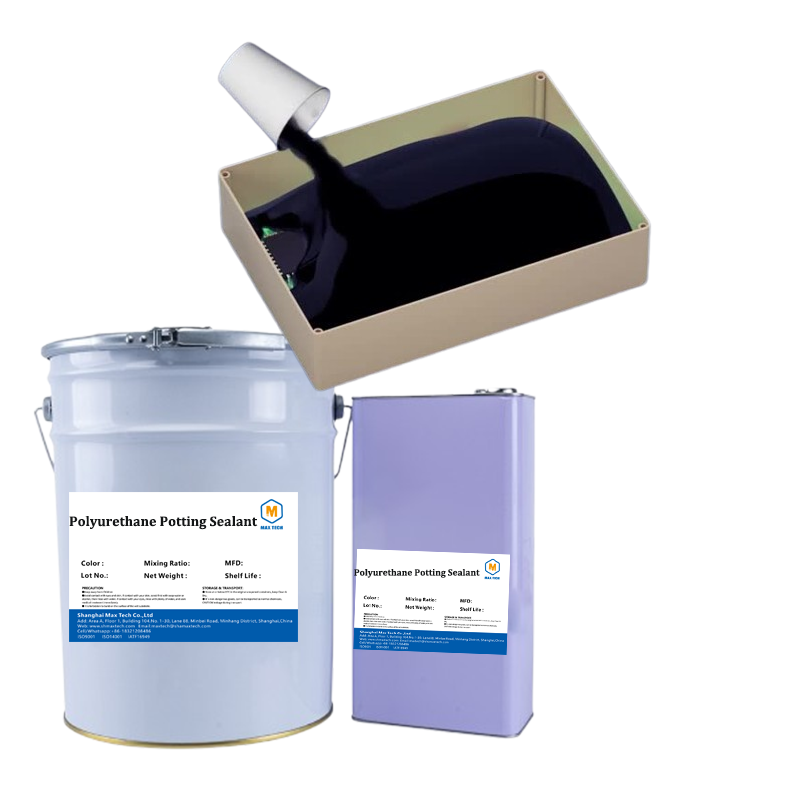Maxtech SI8603 High transparency liquid optical silicone gel
∎Product Description
SI8603 is two-component, silicone elastomer which can cure at room temperature by a poly-addition reaction. This reaction can be accelerated by heat.
∎Key Features
-
Easy processing and curing
-
Middle viscosity, easily mixing as 1:1 by weight or by volume.
-
Excellent transparency
-
High stability to ozone and ultraviolet light
-
High temperature stability
-
High stability and flexibility at low temperatures
-
Outstanding resistance to aging and weathering
-
Low hardness, soft and flexible

Optically Clear Silicone Materials

rain light sensor gel

silicone gel glue adhesive for waterproof junction box

Optically Clear Silicone Materials
∎Technical Data Table
PROPERTY STANDARD/UNITS VALUE of SI8603
---- ---- PART A PART B
Material ---- Polysiloxane Hydrogen polysiloxane
Color Visual inspection Colorless Liquid Colorless Liquid
Viscosity 25°C, cps 6000 6000
Density 25°C, g/cm3 0.99 0.99
Mixture/mass ratio ---- A:B=100:100
Viscosity of mixture 25°C, cps 6000
Operation time 25°C, min 30
Cure condition ---- 25℃,2hours or 80℃, 30min,120℃, 15min
Cured appearance ---- Transparent gel
Hardness Shore00 60
Tensile Strength Mpa 0.7
Tear Strength Mpa 3
Elongation % 100
Refractive Index 23°C, 460nm 1.45
Transparency Index Thickness 2mm, % 92
Application temperature °C -60~260
Note:All above data were tested under standardized conditions or tested by further experiments.
How to use ?
Remix each of the two components (part A and B) every time before using.
● Mixing of the two components
-
Add 100 parts A to 100 parts B.
-
The two components may be intimately mixed either by hand or using a low-speed electric or pneumatic mixer to minimize the introduction of air into the mixture.
-
The viscosity of part A and B can be reduce using Maxtech 2300, add 5 to 10% of the quantity of SI8603. This will make no significant change to the mechanical properties after polymerization. Up to 30% of Maxtech 2300 can be added without causing exudation.
-
● Degassing
-
After mixing base and catalyst, it is recommended to eliminate entrapped air.
-
If the processing is done with the help of a machine both parts are degassed before mixing.
-
The SI8603 A&B is degassed under a vacuum of 30 to 50 mbar. Under vacuum, the product expands 3 at 4 times its initial volume and forms bubbles on its surface. These bubbles will disappear gradually and the mixture will sink back down to its initial volume. Wait a few minutes to ensure complete degassing and then release the vacuum. The product is ready for use.
-
Remark: release the vacuum several times improves the degassing.
-
For easier degassing only fill a recipient to 1/3 of its height.
-
The product can be poured by gravity or under pressure. SI8603 A and B is easier to use than normal RTV because the viscosity of the two components Increases relatively slowly.
-
● Cross-linking
-
At 23°C, the moulds can be demoulded after 24h. In order to achieve the best possible performance levels from the moulds it is preferable to wait for 24 h before using them.
-
If the accelerated cure is desired, mild heat should be preferred. Conversely at lower temperature polymerization is much slower, at 20°C 36h may be necessary to complete cross-linking.
-
Be aware that contact with certain materials can inhibit the curing of this RTV:
-
Natural rubbers vulcanized with sulphur
-
Polycondensation RTV catalyzed with metal salts
-
PVC stabilizing
-
gents Amine cured
-
epoxies Sulphur
-
containing clays.
-
In case of doubts, it is recommended to test the substrate by applying a small quantity
-
of the mixed silicone on a restricted area. Take note that cross contaminates due to improperly cleaned tools or devices are a most frequent cause for inhibition

∎Packing Specification
-
●Part A—1/5 /20/ KG/Bucket
-
●Part B—1/5 /20 KG/ Bucket.
∎Transport &Storage
● When stored at or below -5~30°C in the original unopened containers, this product has a usable life of 12 months from the date of production. Sampling test is necessary for products which exceed shelf life before taking use. Beyond this date, Maxtech Chemical no longer guarantees that the products meet sales specifications.
It’s non-dangerous goods, can be transported as normal chemicals, CAUTION leakage during transport.

































